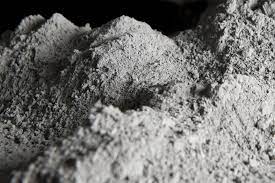
Cement is an essential component of the construction industry and serves as the foundation for countless structures worldwide. From towering skyscrapers to robust bridges, cement plays a pivotal role in ensuring the durability and strength of these architectural marvels.
Cement, in its simplest form, is a powdery substance that solidifies and hardens when mixed with water. It acts as a binding agent, enabling the formation of a solid mass, which is crucial for the construction of various structures. The primary purpose of cement is to hold together different building materials, such as aggregates, sand, and water, to create a coherent and robust final product.
The production of cement involves a complex and intricate process that begins with the extraction of raw materials. The main ingredients used in cement production include limestone, clay, and gypsum. These raw materials are extracted from quarries and carefully selected based on their chemical compositions.
The extracted materials are then crushed and ground into a fine powder, resulting in a substance known as raw meal. The raw meal is heated in a kiln at high temperatures, typically around 1450 degrees Celsius (2642 degrees Fahrenheit). This process, known as clinkerization, causes chemical reactions within the raw meal, resulting in the formation of clinker.
The clinker is then mixed with small amounts of gypsum and other additives to produce the final product: cement. This powdered cement is finely ground to enhance its reactivity and packed into bags for distribution and use in construction projects.
Types of Cement
Various types of cement exist, each tailored to specific construction requirements. The most common types of cement include:
a) Portland Cement: This is the most widely used type of cement, known for its versatility and strength. It is suitable for general construction purposes and is available in different grades, including ordinary Portland cement (OPC) and Portland Pozzolana cement (PPC).
b) Rapid Hardening Cement: As the name suggests, this type of cement sets and hardens rapidly, making it ideal for projects that require quick completion or repair work.
c) Low Heat Cement: This cement generates less heat during the hydration process, minimizing the risk of thermal cracks. It is commonly used in massive concrete structures such as dams and foundations.
d) Sulphate Resistant Cement: This type of cement is resistant to the corrosive effects of sulfates present in soil or water, making it suitable for construction in sulfate-rich environments.
Cement's Role in Construction
Cement is the backbone of the construction industry and offers several benefits that contribute to the longevity and stability of structures. Some key roles of cement include:
a) Strength and Durability: Cement provides strength and durability to construction materials, ensuring the stability and longevity of structures. Its binding properties create a solid matrix that can withstand various environmental and load conditions.
b) Versatility: Cement can be mixed with a range of materials to create different types of concrete, such as reinforced concrete, precast concrete, and ready-mix concrete. This versatility allows for the construction of structures with varying design requirements.
c) Fire Resistance: Cement-based materials exhibit excellent fire-resistant properties, making them a reliable choice for building structures that require enhanced fire protection.
d) Sustainability: Cement production has evolved to prioritize sustainability and reduce its environmental impact. Efforts are being made to minimize carbon emissions, optimize energy consumption, and increase the use of alternative fuels and raw materials.
Cement production plays a crucial role in the development of infrastructure and construction projects in any country. Nigeria, as a rapidly growing economy, presents tremendous opportunities for individuals and investors interested in starting cement production businesses.
This article aims to provide a comprehensive guide on how to initiate and establish a successful cement production venture in Nigeria.
Conducting Market Research
Before delving into cement production, it is vital to conduct thorough market research to gain insights into the demand, competition, and potential profitability of the industry in Nigeria. Analyze factors such as population growth, urbanization trends, government infrastructure projects, and construction activities to understand the market dynamics and potential customers.
Develop a Business Plan
A well-structured business plan is the foundation for any successful venture. It serves as a roadmap, outlining your business goals, strategies, financial projections, and operational plans. Your business plan should include aspects like target market, production capacity, raw material sourcing, marketing strategies, organizational structure, and financial requirements.
Registering Your Business
To start cement production in Nigeria, you need to register your business with the Corporate Affairs Commission (CAC) and obtain the necessary licenses and permits. This includes registering your company name, obtaining tax identification numbers, and fulfilling other legal requirements specific to cement manufacturing.
Securing Land and Location
Identify and acquire suitable land for your cement production plant. Consider factors such as proximity to raw material sources, transportation facilities, availability of utilities (water, electricity, etc.), and adherence to environmental regulations. Ensure that the land is legally owned or leased for an extended period.
Source Raw Materials
Cement production requires key raw materials such as limestone, clay, gypsum, and additives. All materials can be sourced locally. Identify potential sources for these materials and establish reliable supply chains.
Conduct geological surveys to assess the quality and quantity of limestone deposits in the area. Additionally, negotiate favorable agreements with suppliers to ensure a consistent and cost-effective supply.
Obtain Capital Investment
Starting a cement production plant requires significant capital investment. Seek financial support from various sources, including personal savings, bank loans, venture capitalists, or partnerships. Prepare a detailed financial plan, highlighting the estimated costs for land acquisition, plant construction, machinery procurement, labor, marketing, and working capital.
Build Infrastructure and Procure Machinery
Construct the necessary infrastructure, including manufacturing buildings, storage facilities, and administrative offices. Procure high-quality machinery and equipment essential for cement production, such as crushers, kilns, grinders, conveyors, and packing machines. Ensure that the machinery complies with safety and environmental standards.
Implement Efficient Production Process
Design an efficient and sustainable cement production process that maximizes productivity and minimizes energy consumption. Invest in advanced technologies and automation to optimize production efficiency, quality control, and environmental sustainability. Develop standard operating procedures (SOPs) to streamline operations and ensure consistency in the production process.
Establish Quality Control Measures
Maintaining consistent product quality is crucial for the success of your cement business. Establish a robust quality control department equipped with modern laboratory facilities to conduct regular tests on raw materials, intermediate products, and final cement. Adhere to national and international quality standards to build trust and credibility with customers.
Develop Marketing and Distribution Strategies
Create a comprehensive marketing strategy to promote your cement brand and establish a strong market presence. Develop relationships with construction companies, contractors, and distributors to secure long-term contracts. Invest in branding, advertising, and digital marketing initiatives to reach a wide range of potential customers. Ensure efficient logistics and distribution networks to deliver your cement to various locations across Nigeria.
Comply with Environmental and Safety Regulations
Cement production involves various environmental and safety considerations. Comply with local, national, and international regulations regarding emissions, waste management, and occupational health and safety. Implement sustainable practices, such as waste recycling, energy conservation, and carbon footprint reduction, to minimize environmental impact and contribute to sustainability.
Build a Skilled Workforce
Recruit and train a skilled workforce capable of managing different aspects of cement production, including production, quality control, maintenance, logistics, and administration. Emphasize safety training and create a culture of continuous learning and improvement. Invest in employee welfare and provide a conducive work environment to retain talent.
Growth Drivers for Cement in Nigeria
Population Growth and Urbanization: With a population of over 200 million people, Nigeria has one of the largest populations in Africa. The ongoing urbanization trend has led to increased demand for housing, commercial buildings, and infrastructure projects, necessitating the use of cement.
Infrastructure Development: Nigeria's government has prioritized infrastructure development to boost economic growth and improve the standard of living. The construction of roads, bridges, airports, seaports, and power plants requires substantial cement consumption, driving the market.
Housing Deficit: Nigeria faces a significant housing deficit, estimated to be in the range of 17-20 million units. To address this shortfall, various government initiatives and private sector investments have been undertaken, stimulating the demand for cement in the construction of affordable housing.
Foreign Direct Investment: Nigeria has attracted significant foreign direct investment (FDI) in recent years, particularly in the oil and gas, telecommunications, and manufacturing sectors. These investments have contributed to the growth of industrial projects, leading to increased cement consumption.
In conclusion, starting cement production in Nigeria presents significant opportunities for individuals and investors. By following this comprehensive guide, aspiring entrepreneurs can navigate the complexities of the industry and establish a successful cement production business. Remember to adapt to market dynamics, prioritize quality, comply with regulations, and continuously innovate to stay competitive in this thriving sector.























